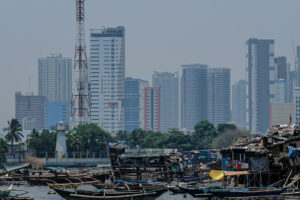THE PHILIPPINES missed some of its targets for 2023 core development indicators like food inflation and poverty reduction, according to a report from the Philippine Statistics Authority (PSA).
According to the Statistical Indicators on Philippine Development 2023 report released on Monday, poverty incidence in 2023 was at 15.5%, lower than the target range of 16.0-16.4% stated in the Philippine Development Plan 2023-2028.
Food inflation in 2023 was 8%, higher than the 2-4% target.
Meanwhile, the Philippines’ ranking in the global innovation index was at 56th out of 132 economies.
Subsistence incidence, or the proportion of Filipinos whose income is not enough to meet their basic food needs, fell to 4.3% last year from 5.9% in 2022, but was still above the 2.5-3.5% target.
The PSA said some indicators with high probabilities of meeting their respective targets for 2028 were capital adequacy, profitability, liquidity, and primary expenditure-to-gross domestic product (GDP) ratio.
It classified 33.3% of the 374 indicators to have a “low likelihood” of being achieved as of 2023. Six out of 14 categories of indicators were classified as having at least 50% of their indicators turning in “average to good” performance. Meanwhile, four categories were estimated to have at least 50% of their indicators turning in “poor” performances.
Philippine GDP expanded by 5.5% in 2023, below the 6.0-7.0% target range.
Meanwhile, the unemployment rate in 2023 dropped to 4.3% against a target of 4.4-4.7%, while the underemployment rate stood at 12.3%.
In terms of governance, among the categories seen as having an average chance of meeting their targets by 2028 were the corruption perception index and local government units with local cultural inventories.
Meanwhile, the indicator categories classified to have a “poor” likelihood of hitting their targets were social protection, trade and investment, industry, agriculture and agribusiness. — Lourdes O. Pilar
